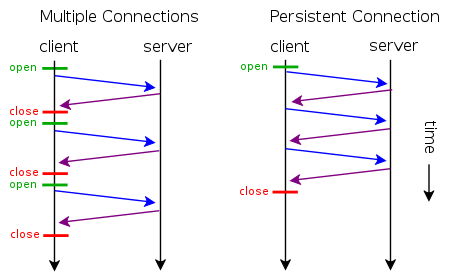1
2
3
4
5
6
7
8
9
10
11
12
13
14
15
16
17
18
19
20
21
22
23
24
25
26
27
28
29
30
31
32
33
34
35
36
37
38
39
40
41
42
43
44
45
46
47
48
49
50
51
52
53
54
55
56
57
58
59
60
61
62
63
64
65
66
67
68
69
70
71
72
73
74
75
76
77
78
79
80
81
82
83
84
85
86
87
88
89
90
91
92
93
94
95
96
97
98
99
100
101
102
103
104
105
106
107
108
109
110
111
112
113
114
115
116
117
118
119
120
121
122
123
124
125
126
127
128
129
130
131
132
133
134
135
136
137
138
139
140
141
142
143
144
145
146
147
148
149
150
151
152
153
154
155
156
157
158
159
160
161
162
163
164
165
166
167
168
169
170
171
172
173
174
175
176
177
178
179
180
181
182
183
184
185
186
187
188
189
190
191
192
193
194
195
196
197
198
199
200
201
202
203
204
205
206
207
208
209
210
211
212
213
214
215
216
217
218
219
220
|
// fasthttp client 示例
type RequestForm struct {
Uri string // 请求uri
Params map[string]interface{} // 请求参数
Header url.Values // 请求头
RespBody string // 响应结果
Resp interface{} // 响应结果结构化
}
type client struct{}
type IClient interface {
Get(dto *RequestForm) error
Post(dto *RequestForm) error
}
const ttl = 5 * time.Second
var (
defaultDialer = &fasthttp.TCPDialer{Concurrency: 200} // tcp 并发200
FastClient = CreateFastHttpClient()
Client IClient = new(client)
)
func CreateFastHttpClient() fasthttp.Client {
return fasthttp.Client{
MaxConnsPerHost: 300,
MaxIdleConnDuration: 10 * time.Second, // 空闲链接时间应短,避免请求服务的 keep-alive 过短主动关闭,默认10秒
MaxConnDuration: 10 * time.Minute,
ReadTimeout: 30 * time.Second,
WriteTimeout: 30 * time.Second,
MaxResponseBodySize: 1024 * 1024 * 10,
MaxConnWaitTimeout: time.Minute,
Dial: func(addr string) (net.Conn, error) {
idx := 3 // 重试三次
for {
idx--
conn, err := defaultDialer.DialTimeout(addr, 10*time.Second) // tcp连接超时时间10s
if err != fasthttp.ErrDialTimeout || idx == 0 {
return conn, err
}
}
},
}
}
func (*client) createSign(dto *RequestForm, ts string) (string, error) {
paramsStr, err := helper.HttpBuildQuery(dto.Params)
if err != nil {
return "", err
}
paramsStr = helper.Md5(paramsStr)
sign := helper.Md5(config.OAPrefix + config.OAKey + config.OASecret + dto.Uri + ts + paramsStr)
return sign, nil
}
func (c *client) Get(dto *RequestForm) error {
req := fasthttp.AcquireRequest()
resp := fasthttp.AcquireResponse()
defer func() {
fasthttp.ReleaseResponse(resp)
fasthttp.ReleaseRequest(req)
}()
ts := strconv.FormatInt(time.Now().Unix(), 10)
sign, err := c.createSign(dto, ts)
if err != nil {
return err
}
dto.Params["sign"] = sign
dto.Params["api"] = dto.Uri
dto.Params["key"] = config.OAKey
dto.Params["ts"] = ts
paramsStr, err := helper.HttpBuildQuery(dto.Params)
if err != nil {
return err
}
req.SetRequestURI("https://xxx.com" + "?" + paramsStr)
req.Header.SetMethod(http.MethodGet)
if dto.Header != nil {
for k, v := range dto.Header {
req.Header.Set(k, strings.Join(v, ","))
}
}
if err := FastClient.DoTimeout(req, resp, ttl); err != nil {
return err
}
dto.RespBody = string(resp.Body())
if resp.StatusCode() != fasthttp.StatusOK || !gjson.Get(dto.RespBody, "success").Bool() {
return errors.New(gjson.Get(dto.RespBody, "msg").String())
}
if dto.Resp != nil {
helper.JsonUnmarshal(dto.RespBody, dto.Resp)
}
return nil
}
func (c *client) Post(dto *RequestForm) error {
req := fasthttp.AcquireRequest()
resp := fasthttp.AcquireResponse()
defer func() {
fasthttp.ReleaseResponse(resp)
fasthttp.ReleaseRequest(req)
}()
ts := strconv.FormatInt(time.Now().Unix(), 10)
sign, err := c.createSign(dto, ts)
if err != nil {
return err
}
dto.Params["sign"] = sign
dto.Params["api"] = dto.Uri
dto.Params["key"] = config.OAKey
dto.Params["ts"] = ts
// application/json 编码方式
req.SetBody(helper.JsonMarshalByte(dto.Params))
req.Header.SetContentType("application/json")
// application/x-www-form-urlencoded 编码方式
// paramsStr, err := helper.HttpBuildQuery(dto.Params)
// if err != nil {
// return err
// }
// req.SetBody([]byte(paramsStr))
// req.Header.SetContentType("application/x-www-form-urlencoded")
req.SetRequestURI("http://xxx.com" + dto.Uri)
req.Header.SetMethod(http.MethodPost)
if dto.Header != nil {
for k, v := range dto.Header {
req.Header.Set(k, strings.Join(v, ","))
}
}
if err := FastClient.DoTimeout(req, resp, ttl); err != nil {
return err
}
dto.RespBody = string(resp.Body())
if resp.StatusCode() != fasthttp.StatusOK || !gjson.Get(dto.RespBody, "success").Bool() {
return errors.New(gjson.Get(dto.RespBody, "msg").String())
}
if dto.Resp != nil {
helper.JsonUnmarshal(dto.RespBody, dto.Resp)
}
return nil
}
// 上传文件到服务端,link: 文件链接,objResp:结果结构体
func UploadFile(link string, objResp interface{}) error {
// 下载文件
_, stream, err := FastClient.Get(nil, link)
if err != nil {
return err
}
urlInfo, err := url.Parse(link)
if err != nil {
return err
}
filename := fmt.Sprintf("%s%s", uuid.New().String(), path.Ext(urlInfo.Path))
httpReq := fasthttp.AcquireRequest()
defer fasthttp.ReleaseRequest(httpReq)
httpResp := fasthttp.AcquireResponse()
defer fasthttp.ReleaseResponse(httpResp)
//新建一个缓冲,用于存放文件内容
bodyBufer := &bytes.Buffer{}
//创建一个multipart文件写入器,方便按照http规定格式写入内容
bodyWriter := multipart.NewWriter(bodyBufer)
//从bodyWriter生成fileWriter,并将文件内容写入fileWriter,多个文件可进行多次
fileWriter,err := bodyWriter.CreateFormFile("media", filename)
if err != nil{
fmt.Println(err.Error())
return err
}
_, err = io.Copy(fileWriter, bytes.NewReader(stream))
if err != nil{
return err
}
// 加入其他普通参数
// for k, v := range dto.ParamsStr {
// _ = bodyWriter.WriteField(k, v)
// }
// 停止写入
_ = bodyWriter.Close()
httpReq.SetRequestURI("https://qyapi.weixin.qq.com/cgi-bin/media/upload")
httpReq.Header.SetContentType(bodyWriter.FormDataContentType())
httpReq.SetBody(bodyBufer.Bytes())
httpReq.Header.SetMethod(http.MethodPost)
if err := FastClient.DoTimeout(httpReq, httpResp, HttpTTL); err != nil {
return err
}
return json.Unmarshal(httpResp.Body(), &objResp)
}
|

